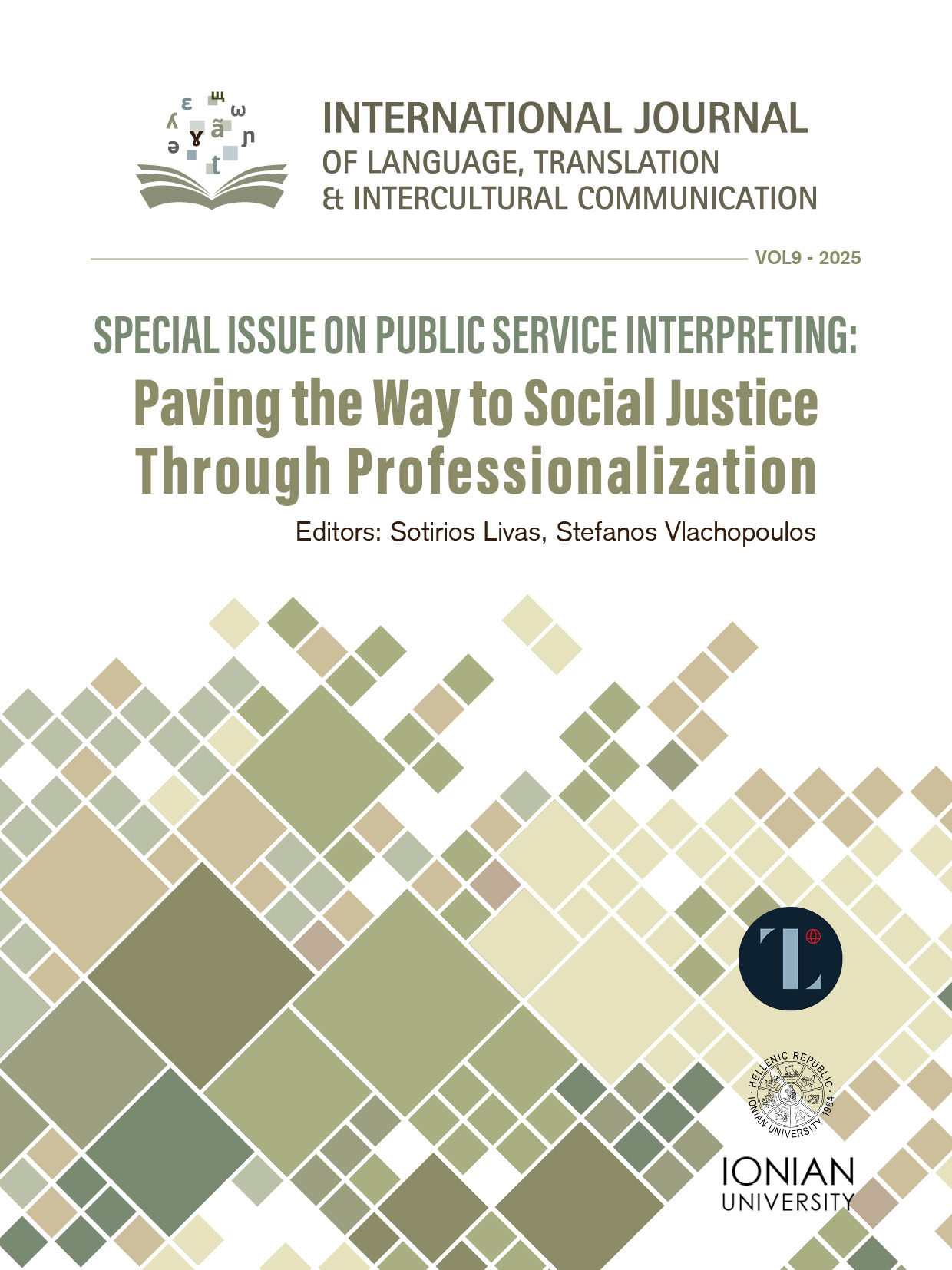A mixed-method approach to assessing intercultural communication needs The case of public service interpreting in asylum contexts

Abstract
This article focuses on examining the research methods used to evaluate intercultural communication needs in two research projects conducted between 2022 and 2024. The first, the Erasmus+ project titled “ReTrans Project: Working with Interpreters in Refugee Transit Zones: Capacity building and awareness-raising for higher education contexts”, in which DFLTI[1] participated as a partner, focused on developing digital training materials to raise awareness of interpreting in humanitarian and transborder migration contexts. The second, “Activities Arising from the Partnership Agreement with the Department of Foreign Languages, Translation and Interpreting of Ionian University”, was part of the Project “Enhancing and building-up national capacity of migration and asylum strategic planning” (Pre-defined project 3), funded by the EEA Financial Mechanism 2014-2021, and aimed to design a robust accreditation system for public service interpreters in Greece.
This article summarizes and evaluates the methodologies employed in both projects. Although similar, each project approached the collection of data and its analysis from different perspectives. To this end, the main aim of the article is to reach safe conclusions on best practices for research related to public service interpreting.
[1] Department of Foreign Languages, Translation and Interpreting, Ionian University, Greece.
Article Details
- How to Cite
-
Kozobolis, S. (2025). A mixed-method approach to assessing intercultural communication needs: The case of public service interpreting in asylum contexts. International Journal of Language, Translation and Intercultural Communication, 9. https://doi.org/10.12681/ijltic.41837
- Section
- Articles

This work is licensed under a Creative Commons Attribution-NonCommercial-ShareAlike 4.0 International License.
Copyright Notice
Authors who publish with this journal agree to the following terms:
- Authors retain copyright and grant the journal right of first publication with the work simultaneously licensed under a Creative Commons Attribution License that allows others to share the work with an acknowledgement of the work's authorship and initial publication in this journal.
- Authors are able to enter into separate, additional contractual arrangements for the non-exclusive distribution of the journal's published version of the work (e.g., post it to an institutional repository or publish it in a book), with an acknowledgement of its initial publication in this journal.
- Authors are permitted and encouraged to post their work online (e.g., in institutional repositories or on their website) prior to and during the submission process, as it can lead to productive exchanges, as well as earlier and greater citation of published work (See The Effect of Open Access).


